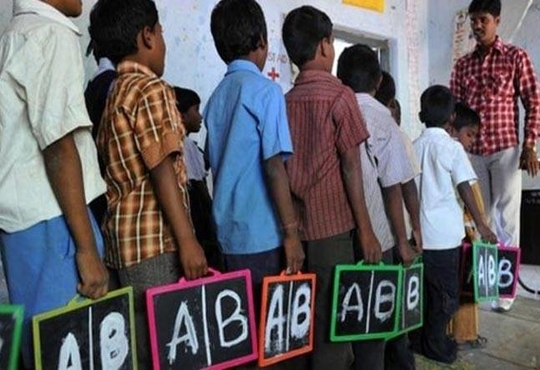3 Main Problems with English Writing Indian Students Face and Top Solutions
CIOREVEIWINDIA | Monday, 21 May 2018, 11:58 IST
 Every year, many Indian students go to pursue their studies abroad in colleges where the main language of instruction is English. If the Indian students have spent a majority of their pre-college academic life speaking and writing their native tongue, mastering English becomes a huge problem, particularly when it comes to writing. Writing is an essential and inescapable aspect of college life that every student must do if they want to get their degree, meaning Indian students have no choice but to master it. This article will discuss four main problems that Indian students face with English writing and the top solutions to overcome them.
Every year, many Indian students go to pursue their studies abroad in colleges where the main language of instruction is English. If the Indian students have spent a majority of their pre-college academic life speaking and writing their native tongue, mastering English becomes a huge problem, particularly when it comes to writing. Writing is an essential and inescapable aspect of college life that every student must do if they want to get their degree, meaning Indian students have no choice but to master it. This article will discuss four main problems that Indian students face with English writing and the top solutions to overcome them.
1. Limited Vocabulary
Vocabulary is very important to any language; how else is anyone supposed to express themselves clearly and be understood when they don’t know the words? It turns out that some Indian students have a limited vocabulary, which makes writing in English a problem. This means that when the time comes to write an essay or assignment, they may have difficulties understanding the topic and writing something that is intelligible. The problem with having a limited vocabulary doesn’t just affect the student's ability to write in English, it also affects their ability to learn in a major way since they are at an English-speaking college.
The solution for Indian students, in this case, is for them to improve their overall English skills by reading more English literature. They should make this a habit because not only will it expand their vocabulary but also teach them the best way to use words and construct sensible sentences. Good reading materials include books, newspapers, and magazines, all of which can easily be found online or at the school library. They can also improve their English vocabulary by conversing with native English speakers and asking what the words they don’t understand mean or looking them up later on.
2. Grammar and Sentence Structure
The rules of grammar and sentence construction are different for every language. When non-native English speakers write in English, they will subconsciously try to apply the rules of their language, which leads to awkward grammar and sentence structure. In this section, we are going to look at some of the grammar and sentence structure differences between English and one of the commonly spoken languages in India: Hindi.
When it comes to grammar, Hindi speakers tend to overuse the continuous tense. For example, instead of saying, “I don’t know the answer,” they will say something like, “I am not knowing the answer.” This is because there is no correspondence in the way tenses (past, present, present continuous, and future) are used when expressing what they mean in Hindi, and they think the same applies to English. Another problem is that the Hindi language does not have the auxiliary verb ‘do’, and that is why some Indian students can say things like, “What you need?” instead of, “What do you need?”.
When it comes to sentence structure, a major difference that can cause problems is that English uses the Subject-Object-Verb structure, while Hindi uses the Subject-Verb-Object structure. Another difference that has the potential to cause problems is that English uses prepositions while Hindi uses what is known as “postpositions.” This means that instead of the proposition coming after the noun or pronoun it qualifies, it comes after it.
The solution to this problem for Indian students is to read grammar books. There are also some great grammar resources online they can use, such as The Grammar GirlandGrammarly Handbook. These resources will teach them important grammar rules and how to construct sentences. Also, they can use grammar checkers like Grammarly when writing in order to minimize mistakes.
3. Wrong Attitude
Some Indian students have the wrong attitude towards English which can impede their ability to speak, read, and write it. This is especially true for students with cultural backgrounds that enforce a deep commitment to their language and/or harbor negative attitudes towards people from English speaking countries. Another problem is that some people are afraid to make mistakes and don’t really try to get better at English to avoid the feeling of shame or failure. In the end, they don’t even bother seeking help from their professor or even their peers when they are struggling with anything English-related, including writing assignments.
The solution is to help these students understand that English is a beneficial language and will serve them well even when they return to India. Even in India, food labels, medical instructions, streets signs, movie tickets, and even government or hospital forms are in English. This means that learning English is an essential tool that will empower them both at home and abroad. Making them understand this is the way to change the negative attitude they may have towards English and motivate them to overcome their speaking, reading, and writing problems.
These are the three main problems that Indian students face when it comes to learning English. As you can see, the solutions are not that complicated and can help any student that is struggling with these problems master their English skills beyond writing. Luckily, if the Indian student is still having problems with their English writing, another way to see how things are written is to get essay writing help from CustomWritings and get a professional-written paper for reference.


.jpg)

